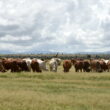Send them to school not the fields
By Conrad Mwanawashe
The number of children in child labour in Africa will rise to 105 million by 2025 if efforts to end the practice are not doubled, stakeholders at a workshop on Child Labour heard, Thursday.
A report by the International Labour Organisation (ILO) and UNICEF for 2020 showed that there are 160 million child labourers worldwide, an increase of 8.4 million since 2016, highlighting increasing trends in the last four years.
In Sub-Saharan Africa, one in four children are in child labour with 70% working in agriculture, mostly on family farms. Children aged 5 to 11 years form the largest share of those in child labour.
The Child Labour Workshop was convened by the Tobacco Industry and Marketing Board (TIMB) supported by organised ECLT Foundation.
TIMB is primarily a regulatory and advisory statutory body whose functions include to control and regulate the exchange of all tobacco produced in Zimbabwe between growers and merchants.
Child labour workshop
The multisectoral workshop brought together the government, National Employment Councils (NECs), civil society, and international organisations, with a specific focus on generating actionable solutions to combat child labour in Zimbabwe.
 A Senior Programme Officer in the Country Office for Zimbabwe and Namibia at International Labour Organization, Adolphus Chinomwe, told the workshop that child labour drivers include extreme poverty, rapid population growth, recurrent crises, limited alternatives and inadequate social protection.
A Senior Programme Officer in the Country Office for Zimbabwe and Namibia at International Labour Organization, Adolphus Chinomwe, told the workshop that child labour drivers include extreme poverty, rapid population growth, recurrent crises, limited alternatives and inadequate social protection.
“Many children in child labour are doing hazardous work (28.7% of those 5-11 years and 46.6% of those 12-14 years. While many children in child labour are combining school with work, large numbers are out of school (more than a quarter of children 5-11 years and nearly a third of those 12-14 are out of school). If nothing is done, the number of children in child labour in Africa will rise to 105 million by 2025,” said Chinomwe.
What is child labour?
The term “child labour” is often defined as work that deprives children of their childhood, their potential and their dignity, and that is harmful to physical and mental development.
According to the Zimbabwe Statistical Agency (ZIMSTAT)’s Labour Force and Child Labour Survey: 2019, about 50,000 children were in child labour. These children worked for more than 21 hours per week in economic activities including retailing and paid employment. Other children were also engaged in at least 35 hours of non-economic activities consisting mainly of household chores.
A Ministry of Public Service, Labour and Social Welfare Survey on child labour in the Tobacco Sector 2019 revealed that 26.3% of the children aged 5 – 15 years were involved in tobacco activities in the seven days preceding the survey. Most of these children were in communal areas.
Fighting child labour

The ECLT Foundation is an independent Swiss foundation in 2000 to bring together key stakeholders against child labour in the tobacco-growing supply chain. The Foundation is a member of the UN Global Compact and holds special consultative status with the UN Economic and Social Council.
“Our aim is to make sure that tobacco that is produced is free of child labour. The ECLT Foundation seeks to work with government, business and partners in countries and areas where tobacco is grown. We do a lot of work in the education sector by supporting schools because if there are schools a child’s chances of going to work in the fields is significantly reduced,” said ECLT Foundation President of the Board Michiel Reerink.
In the mining sector, it was noted that mine closures due to depletion of mineral resources, falling demand of mineral and falling prices of some minerals left many former mine workers and their families in poverty leading them to scrounge for minerals with their children in deserted mines and mining dumps.
About 40% of mine workers were of foreign origin in the 1970s. They do not own agricultural land hence their reliance on artisanal mining after mine closures.
Zimbabwe has high prevalence of informal or artisanal mining operations that lack regulation and oversight increasing chances of children working in informal mining.
Feedback: cmwanawashe@marichomedia.com












